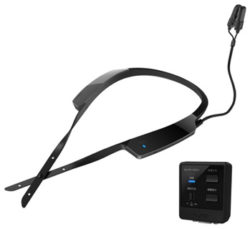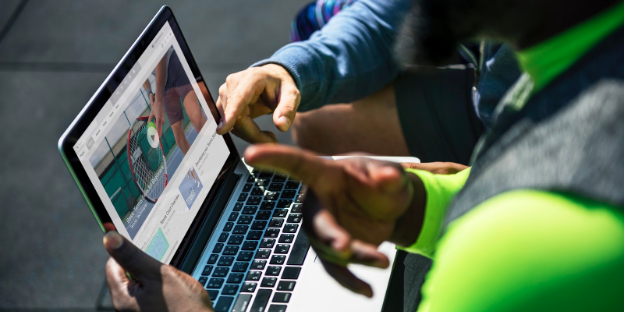Beyond Field Service Software: Smart Uniforms and Wearable Tech
- October 14, 2016
- By: Vonigo
You invested in service industry software to give your company a technological edge. You’ve integrated tablets and mobile phones. But starting soon, you might have a new and unexpected tech platform to boost safety and productivity: smart uniforms. That’s right. The power is in the uniform.
Smart uniforms are a natural progression from wearables like the Fitbit or the Apple Watch. Millions of people are already using to track their heart rates, see how they are performing compared to others moving around, or play games. There’s serious value for a field service company, too: keeping your workers from taking themselves out through accidents.
Every 15 seconds, 153 workers from all around the world have a work-related accident, according to the International Labour Organization. There are movers compressing the discs in their back with every sofa; Roof and gutter cleaning personnel straining themselves into awkward positions; window cleaners on the twenty second floor, one wrong move from a really bad day.
What about wearable tech for these kind of industries ? Actually, field service companies are already testing this out, with widgets integrated right into the fabric of uniforms. It’s not just about safety, either. This new technology can help workers do their jobs under difficult conditions they face every day. New wearable tech seems like a possible solution – and we’re not talking about Google Glass or the Apple watch. This tech is potentially built right into the fibres of field technician uniforms.
Wearables that Can Reduce Worker Sick Days
Between half-hour ‘easy’ jobs that turn into 2.5-hour slogs, vehicle breakdowns and other problems, many field service companies already have trouble of getting to all of their scheduled service calls. Throw in one or team members calling in sick because they messed up their back or sprained their wrist and you potentially have a customer service problem.With that in mind, how about a ball cap that measures a worker’s fatigue levels as they’re out driving your trucks or doing a lengthy installation?
Mining company Rio Tinto is already using that tech in the SmartCap, currently available in baseball cap, visor and headband versions. The tech doesn’t just measure fatigue levels: if a worker is about to experience a micro-sleep event that could cause an accident, it trips an alarm. Workers will be safer in situations where carelessness or sudden lapses can literally hurt them.
 Last year, Fujitsu came out with their FEELythm wearable sensor that offers a similar kind of alert capability for fleet vehicle operators who wear the device on their neck.
Last year, Fujitsu came out with their FEELythm wearable sensor that offers a similar kind of alert capability for fleet vehicle operators who wear the device on their neck.
Workers who use this tech can change behavior to manage fatigue better, potentially resulting in fewer accidents. That helps keep insurance premiums down and of course, keep your workforce in better shape.
Is That a Charger in Your Pocket?
Yes. For maybe fifty bucks more than the price of a regular pair of jeans, people can already buy pants that can charge their mobile phones. Going beyond that, the Solar Shirt is already a thing: a garment that powers up as you walk around, letting you charge up your smartphone on the go (and throw in the wash just like any other typical garment).
Field service companies can make good use of this kind of wearable tech. Consider the technician on the go in the middle of the afternoon. They’ve been using their phone all day. They’re checking their field service software on their phone or GPS routing to the next service call. The phone is down to 4 percent power and there are at least two or three more home visits scheduled. Their van, with its trusty charger, is a long way across the property, out of reach of where the work is happening. Inability to connect with your software could result in missed calls and impact their ability to do their job.
If the phone has been charging the entire time while simply resting in the tech’s pocket, this problem will never come up. Here’s one way to empower your employees.
A Uniform Light Source for Your Workforce
Many field service technicians often work in dark conditions, in attics, crawlspaces and other spots away from direct light. The trusty flashlight has been a mainstay of any technician’s toolkit, but it can be awkward working with a light in one hand (or clipped between their teeth, if they need both hands free).

LED lighting for clothing made its mark earlier in 2016 with the Lady Gaga dance set and with fashion futurists. Today, EasyJet airline engineers have built-in LED lights on the hood and shoulders of their uniforms to help them light up work areas and also provide extra lighting in case of emergencies. This is already happening: “With features like the LED hood and video streaming and communications capability these amazing designs offer very practical solutions for engineers working on the ramp whilst enhancing safety at the same time,” said Ian Davies, engineering director for EasyJet.
Today and into the future, your uniforms won’t just show off your company’s brand: the tech that’s literally woven into the cloth will help keep your workers safe and productive. Have you used any unique tech as part of your uniforms? Have a pic of your technicians wearing the latest in smart uniform technology? Sent it to us, we’d love to feature it here on our site.



